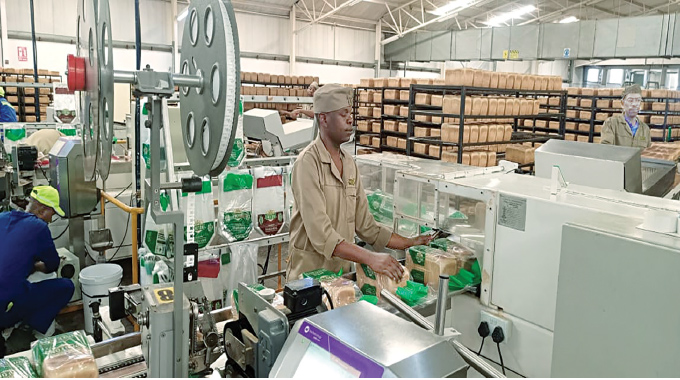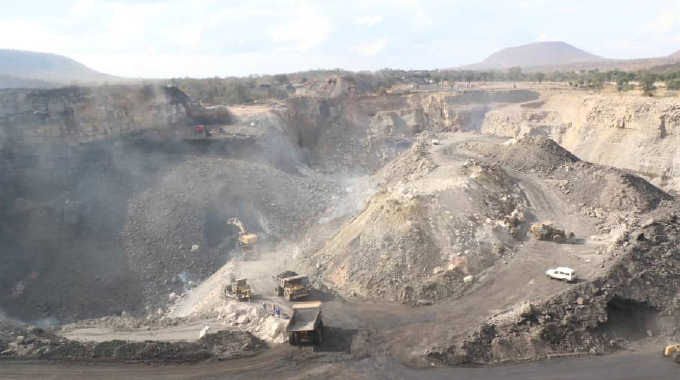Land preparation: The basics of planting

THE planting season has begun. While most farmers have decided which crop they will plant, land preparation is their next focus.
This is a key process to successful crop establishment.
Good crop establishment depends on many factors and the best practices will vary from one farm to the next because of differences in rainfall or soils.
Farmers can lose yield due to uneven tillage resulting in poor crop establishment, so it is worth the effort at the start of the season to get it right.
Good land preparation is the foundation for successful crop production and contributes to long-term soil fertility, soil moisture retention and weed management.
Done with the right implements at the right time it makes planting and weeding easier resulting in higher yields.
Good land preparation will help to prepare a seed bed by crumbling and loosening the soil; it will loosen the soil thereby making it easier for plant roots to grow and produce stronger crops and better yields; it will let air enter the soil to help plants grow strong; it will incorporate crop residues and manure into the soil – this will improve the soil structure and make the soil more fertile; it will help control weeds, pests and diseases and it will increase water infiltration into the soil.
The main disadvantages of poor tillage occurs when the soils are too wet, or when the soil has been cultivated to the same depth for a number of years.
Such practices result in a dense compacted layer just below the depth of tillage.
Poor tillage, which does not incorporate crop residues and manure into the soil will result in hard, dry soils with low fertility where crops give poor yields, or may even die and crop establishment is slowed down due to reduced root and plant growth.
In hard soils some plants may not be strong enough to grow and will die.
This is because straight after a rain storm the soils are too wet and the crops roots are starved of air, or once the soils dry out the plant is starved of water, as the plants roots cannot grow through the cultivation/plough pan (a dense compacted layer just below the depth of tillage).
Crops in poorly tilled soils, which are weak, will suffer more from pests and diseases and give poor yields, or the crop may even die and the soils will not hold water and will get very hot in the dry periods.
Tillage is often classified into two types, primary and secondary.
There is no strict boundary between them so much as a loose distinction between tillage that is deeper and more thorough (primary) and tillage that is shallower and sometimes more selective of location (secondary). Primary tillage such as ploughing tends to produce a rough surface finish, whereas secondary tillage tends to produce a smoother surface finish, such as that required to make a good seedbed for many crops.
Harrowing and rototilling often combine primary and secondary tillage into one operation.
Tillage can general be separated in to three systems: reduced tillage, intensive tillage and conservation tillage.
Reduced tillage leaves between 15 and 30 percent residue cover on the soil or 500 to 1,000 pounds per acre (560 to 1100 kg/ha) of small grain residue during the critical erosion period.
This may involve the use of a chisel plough, field cultivators, or other implements. See the general comments below to see how they can affect the amount of residue.
Intensive tillage leaves less than 15 percent crop residue cover or less than 500 pounds per acre (560 kg/ha) of small grain residue.
This type of tillage is often referred to as conventional tillage but as conservational tillage is now more widely used than intensive tillage.
It is often not appropriate to refer to this type of tillage as conventional.
Intensive tillage often involves multiple operations with implements such as a mould board, disk, and/or chisel plough.
Then a finisher with a harrow, rolling basket, and cutter can be used to prepare the seed bed.
There are many variations.
Conservation tillage leaves at least 30 percent of crop residue on the soil surface, or at least 1,000 lb/ac (1,100 kg/ha) of small grain residue on the surface during the critical soil erosion period.
This slows water movement, which reduces the amount of soil erosion.
Conservation tillage also benefits farmers by reducing fuel consumption and soil compaction.
By reducing the number of times the farmer travels over the field, farmers realize significant savings in fuel and labour.
However, conservation tillage delays warming of the soil due to the reduction of dark earth exposure to the warmth of the sun.
Other subcategories of conservation tillage include: No-till – Never use a plough, disk, etc. ever again. Aims for 100 percent ground cover; Strip-Till
Narrow strips are tilled where seeds will be planted, leaving the soil in between the rows untilled; Mulch-till; Rotational Tillage – Tilling the soil every two years or less often (every other year, or every third year, etc.); Ridge-Till and Zone tillage.
All activities that revolve around land preparation are divided to structure and pace the implementation process in order to be ready for planting at the most suitable time, according to the specific regional climatic conditions and the crop requirements.
The writer is Engineer Tapuwa Justice Mashangwa, a young entrepreneur based in Bulawayo, Founder and CEO of Emerald Agribusiness Consultancy. He can be contacted on +263 739 096 418 and email: [email protected].











Comments